Riga-born Anatols Lapiņš was the chief designer of Porsche for almost 20 years, ushering the legendary sports car manufacturer into a new era and writing his name in the history of the car industry, says Ivars Norvelis, head of the official representative of Porsche in Latvia – SIA Baltijas Sporta Auto.
Lapiņš became chief designer of Porsche on April 15, 1969. In the early 1970s, the company was undergoing a change, as Porsche was then under the supervision of Ernst Fuhrmann, who wanted to develop front-engine models. Under his leadership, the German sports car manufacturer entered the so-called “transaxle” era. Anatols Lapiņš was also working at this time.
Transaxle is a single unit consisting of a transmission, differential and axle. On Porsche models, it is positioned at the rear to balance the weight of the engine in front, thus ensuring ideal weight distribution and excellent handling. The end of the Transaxle era came in 1995, after almost 400,000 cars had been produced.
From September 22 to October 15, the Riga Motor Museum will host the first-ever exhibition of historic cars from a German sports car manufacturer in Latvia to celebrate Porsche’s 75th anniversary – Driven by Dreams. The Story of Porsche and Anatols Lapiņš: the Latvian who Made Pigs Fly.
The exhibition is also a tribute to Anatols Kārlis Lapiņš, a native of Riga, who was the chief designer of Porsche from 1969 to 1988. In anticipation of the opening, SIA Baltijas Sporta Auto invites you to discover the iconic Porsche models created under Lapiņš’ leadership, which will soon be on display in his homeland.
For the first time in Latvia, historic Porsche models from the manufacturer’s museum in Stuttgart: the legendary 917/20 or “Pink Pig”, which caused a sensation in 1971 and whose unique livery was designed by Lapiņš. Also travelling from Stuttgart are the 930 Turbo and the 928 GTS Wiedeking Edition, as well as 1:5 scale models of cars designed by Anatols.
“Interestingly, the 928, created by Lapiņš, won the highest international award – European Car of the Year – in 1978. The Porsche 928, although constantly improved and modernized, is still the first and only sports car to win this award,” says Norvelis.
The exhibition will include exhibits from the Porsche Museum in Stuttgart as well as rare Porsches from the collections of members of the Latvian Antique Car Club.
According to Norvelis, the 356 is also symbolically included in the exhibition. “It is no coincidence that the exhibition is named after Porsche and Anatols Lapiņš, because this year we are celebrating the 75th anniversary of the brand and it has a rich history. This car was proof that dreams can be achieved. Ferry Porsche first had the idea for the 356/1 in the winter of 1947, and in the spring of 1948 he tested the new chassis – only to register the first car under the Porsche name a few months later, on 8 June,” Norvelis explained.
The first Porsche with a front-mounted engine
The first front-engine Porsche under Lapiņš’ leadership was developed in 1975 and went into commercial production in 1976. The 924 was a unique and innovative sports car. Porsche became the first car manufacturer in the world to hot-dip galvanize its steel bodies, thus ensuring a six-year guarantee against rusting.
“Porsche took the public by surprise with the presentation of this modern sports car with a four-cylinder engine and transaxle technology. At the same time, the advertising slogan, which described the model as a ‘universal family sports car’, reflected the manufacturer’s vision for it,” said Norvelis.
Around 121,000 examples of the 924 base model were produced, and it was the inspiration and basis for other Porsches of the transaxle era. These were already more powerful and sophisticated, such as the 944, the 944 Turbo and finally, in the early 1990s, the 968.
The Porsche 924 Martini Edition will be on display at the Riga Motor Museum. This name, however, has never been official. Porsche won the 1969, 1970, 1971 and 1976 World Championships. To celebrate these achievements, a World Championship version of the 924 was created in December 1977 and went on sale in 1979. It was called the Martini Edition.
The 1977 Porsche 924 Martini Edition on display in the museum belongs to car enthusiast Valters Raņķis. He has owned the car for five years and it underwent a full restoration three years ago. “I have a small collection of Porsches and I try to find rarer models. I really like the design of this rare 924,” says its owner, Valters Raņķis.
928 – Porsche’s first front-engine GT model
The 928, designed by Anatols Lapiņš, was the first Porsche Gran Turismo with a front-mounted engine. After its debut at the 1977 Geneva International Motor Show, 61,506 cars were produced until 1995. The Porsche 911 had been in production for 14 years by then and there were plans for the 928 to replace it.
The design of the 928 revolutionized the automotive hierarchy by combining three vehicles in one: a high-performance sports car, a comfortable luxury saloon and an all-rounder. The 928 became the first engine of its kind to appear in a standard European production car. It was derived from a water-cooled four-cylinder V8 racing engine and made of aluminum.
The chassis was equipped with a completely new, passively controlled rear-wheel suspension – the “Weissach axle”. The uniqueness of this double wishbone was its stabilizing effect. It acted as passive rear-wheel steering and thus contributed significantly to the Gran Turismo’s active safety.
The 928 GTS Wiedeking Edition, which will arrive in Riga from Stuttgart, is named after former Porsche director Wendelin Wiedeking, who drove the 928 GTS as a company car.
The last stage of the 928’s evolution (1992-1995) was characterized by flared rear wings, a red rear light cluster, a rear spoiler painted in the same body color, Cup exterior mirrors and 17-inch Cup wheels. The 5.4-litre engine of the GTS had 350 horsepower.
Porsche 930 Turbo: a car that heightens all the senses
In 1975, a super-powered, turbocharged version of the 911, the 911 Turbo, originally known as the 930, was launched. The 911 Turbo is the top-of-the-range model of the 911 model line.
The 930 featured flared rear wings, which increased its width by 12 centimeters. The rear bonnet featured a distinctive spoiler with a wide black hard rubber border.
The 930 Turbo was a direct competitor to the Lamborghini Countach and the Ferrari 356 GT4 BB. The car can go from 0-100 kilometers in 4.8 seconds, making it a very powerful car even today.
When Porsche announced that it would start production of the 930 Turbo, the company was surprised by the demand. Instead of the 500 originally planned, 1,000 were produced. In total, 18,000 of these cars were delivered.
Ferry Porsche gave the first 930 Turbo to his daughter Louise. The Porsche 930 Turbo has also been put to song. KK Downing wrote the lyrics to the song Turbo Lover for the band Judas Priest. The song is included on the band’s album Turbo.
The exhibit in Latvia is from the Porsche Museum in Stuttgart.
944: can drive fast, but also relaxed
In spring 1982, the 944 became available and quickly found fans. There was a reason for this: it was a sports car that allowed very fast but relaxed driving.
Although the 944 took its body idea from the 924, its shape was much more pronounced. The 944’s front spoiler had square rubber bumpers painted in the car’s livery, while the new model had significantly wider, slightly more angular wings.
The 944 was powered by a 2.5-litre in-line four-cylinder engine developed by Porsche, making the 944 a true Porsche in the eyes of its buyers. This model, which also had transaxle technology, was also mass-produced by Audi in Neckarsulm, Germany.
964: the final Lapiņš Porsche
The 964 is one of the most sought-after 911 models. This was also the last project supervised by Anatols Lapiņš. The first 964, the Carrera 4, featured an advanced all-wheel drive system that provided excellent handling in all weather conditions. Since then, all-wheel drive technology has been firmly established in the 911 range.
On the 911 G Series, which was about to be discontinued, the “ducktail” spoiler fitted to improve aerodynamics was replaced on the new 964 by an electronically controlled one, i.e. when the car reached 80 kilometers per hour, the spoiler automatically lifted to increase downforce at the rear of the car.
The front bumpers were mounted on the same level with the car’s bodywork and a plate was fitted under the nose to prevent turbulence, giving the 964 Carrera a much better drag coefficient than its G-series predecessor. In addition, a number of technologies were introduced that significantly improved safety.
968 – everything new is the old well forgotten
Three years after Lapiņš’ retirement, in 1991, Porsche presented the 968 and 928 GTS. To reduce costs, the 968’s bodywork was taken from the 944. The body design incorporates elements of both the 911 and the 928, such as the more rounded front bumpers.
Like the 911, two elegant horizontal air intakes are positioned below the bumper line. The more rounded front section houses the headlights, fog lights and turn indicators, which were very similar in style to the 911 (964) of the time.
The curve line from the front wheel arch to the rear wheel arch of the 968 was taken from the 924.
A 1994 Porsche 968 convertible owned by Edmunds Purmalis will be on display at the Riga Motor Museum. The car enthusiast bought this model about seven years ago in an online auction.
“My hobby is cars and restoring them, I don’t like to buy a perfect ready-made car. I want to put my hand to restoring a car, so I restore all my cars myself as much as possible. This convertible is also in good condition, both technically and visually,” says Edmunds Purmalis, owner of the Porsche 968 Cabriolet.
About SIA Baltijas Sporta Auto
The official Porsche dealer in Latvia, SIA Baltijas Sporta Auto, boasts a dynamic and knowledgeable team, as well as 20 years of experience in the car sales industry. Baltijas Sporta Auto is the authorized Porsche dealer in Latvia, providing reliable and customer-oriented sales and car service.
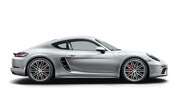
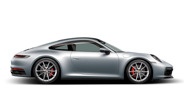
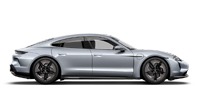
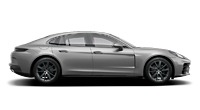
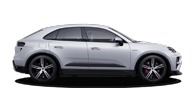
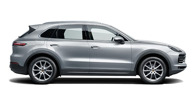
 718 Models
718 Models  718 Cayman GT4
718 Cayman GT4 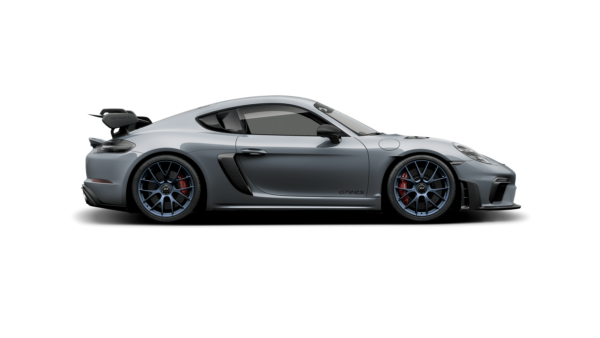 718 Cayman GT4 RS
718 Cayman GT4 RS 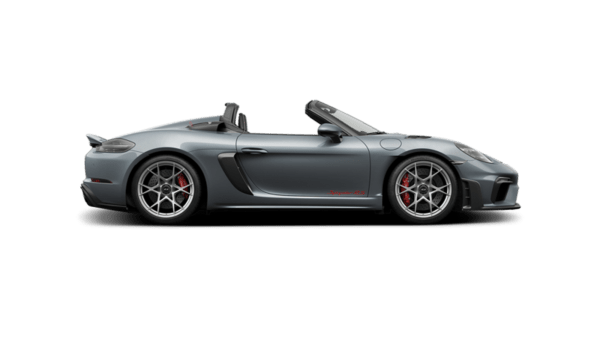 718 Spyder RS
718 Spyder RS  911 Carrera Models
911 Carrera Models  911 Carrera Cabriolet Models
911 Carrera Cabriolet Models  911 Targa Models
911 Targa Models  911 GT3 RS
911 GT3 RS  Taycan models
Taycan models  Cross Turismo models
Cross Turismo models  Sport Turismo models
Sport Turismo models  Panamera models
Panamera models 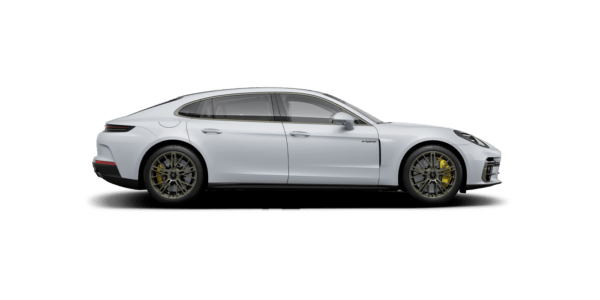 Panamera Executive models
Panamera Executive models  Macan Electric Models
Macan Electric Models  Macan Models
Macan Models  Cayenne models
Cayenne models  Coupé models
Coupé models 






